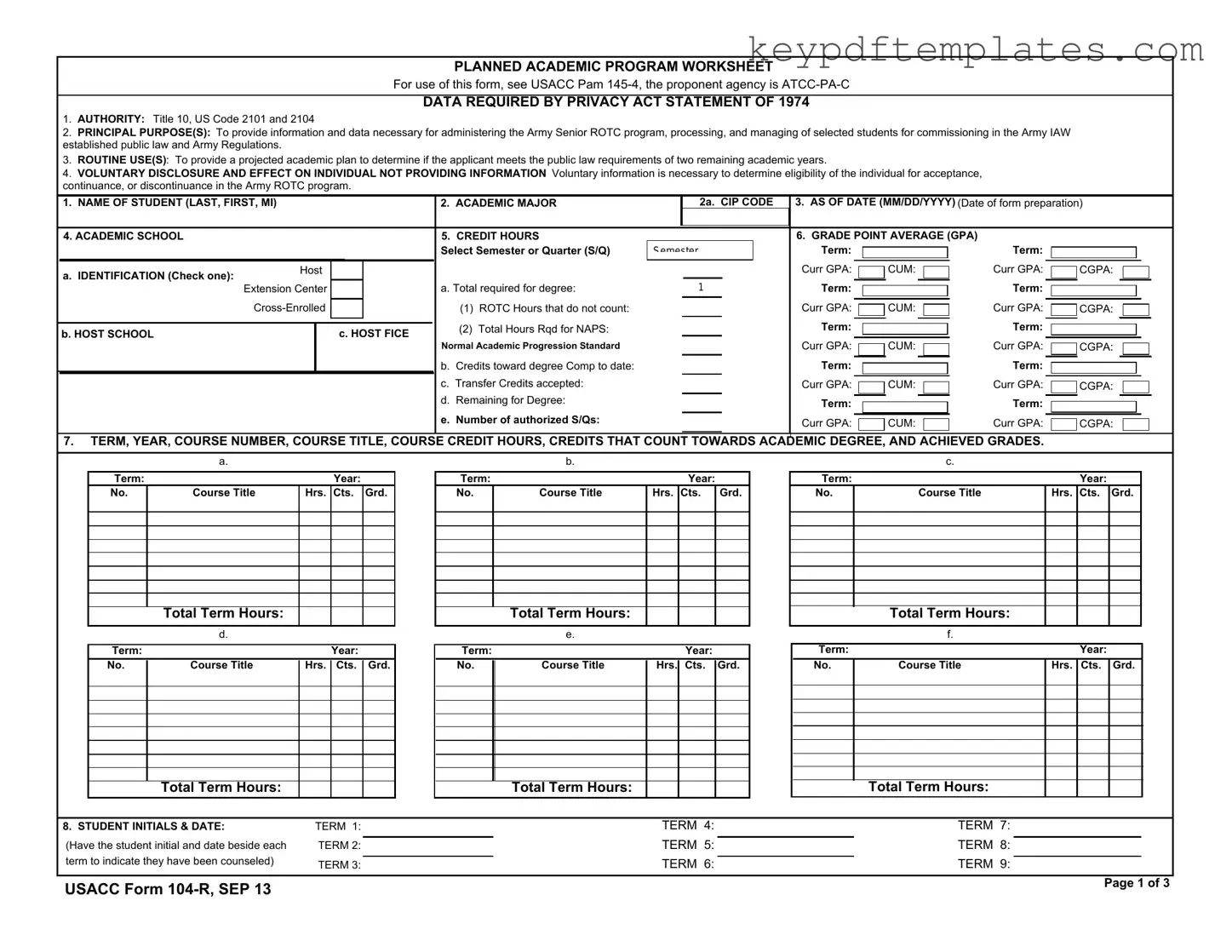Get 104 R Form
The 104 R form, known as the Planned Academic Program Worksheet, is a crucial document for students participating in the Army Senior ROTC program. This form collects essential information to assess whether students meet the academic requirements for commissioning in the Army. Timely and accurate completion of the 104 R form is vital for ensuring that students remain eligible and on track in their academic pursuits.
Modify Document Online
